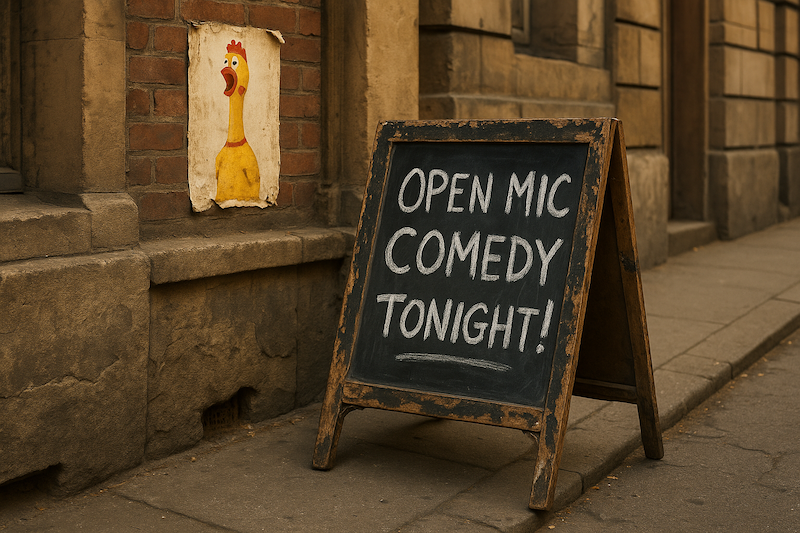If you’re a fresh open mic comedian, perhaps one’s that just graduated from the Hard Knock Knocks Comedy School, then creating an open mic comedy night is one of the best ways to get guaranteed and intense stage time. You can also trade stage time with other comedy room runners to get a spot on their night.
And if you’re a pub, looking to increase bar sales midweek, again, you can’t go past creating an open mic comedy night. Here’s our recommendations, based on 10 years in the biz:
Step 1: Choose the Right Night
There are plenty of open mic comedy nights in Melbourne and Sydney, less so in other capital cities. Either way, it’s recommended to choose a night that’s not competing with neighbouring open mic comedy rooms.
Once you’ve chosen the night, make it regular, preferably weekly. If you’re an open mic organiser, then be prepared to settle on Mondays, Tuesdays or Wednesdays as that’s when the pubs are most likely available, or quieter.
Step 2: Find a Host (MC)
A strong MC makes or breaks an open mic night. This is where you might have to pay some money. Depending on the night, you might be able to get a solid MC for as little as $100 and a bar tab. But at that rate, don’t expect a celebrity comedian, like Dave Hughes or Jimeoin.
A professional MC keeps energy up, fills gaps between acts, and builds rapport with the crowd. They are also a reminder of the standard that new acts should be aiming.
Step 3: Set a Format and Line-up
Aim for a tight, 90-minute show. Start with a 7-minute MC intro, followed by 6 to 8 comedians doing 5-minute spots (” target=”_blank” rel=”noreferrer noopener”>headliner doing 10 min (if you can afford it). A rule of thumb when it comes to paying professional, but not celebrity comedians, is $10 per minute. So a 10 minute performance will cost you around $100.
As for selling tickets for the night, at this level, unless you have a consistent MC or headliner, like Spleen, then it’s best not to sell tickets.
Step 4: Promote the Night
Use a simple poster with the night’s name, time, and a call to action: “Free Entry” or “Book Your Spot”. Promote it across Instagram, Facebook, and Gigme. Be sure to let us know, so we can list it here. Encourage performers to share the event too—comedians bring friends!
Step 5: Set Up the Room
Good comedy needs low ceilings, tight seating, and a spotlight. Raise the mic on a small stage and ensure you have enough oomph from your sound system. Two 10 or 12 inch speakers are recommended, that are on a stand, rather than on the floor. Wired mics are also recommended, because less can go wrong. Wireless mics need batteries, good line-of-sight, and an extra level of competency to set up that you don’t need.
Step 6: Manage the Sign-Ups
There’s a few options for sign-ups, and each has their pros and cons:
Sign-up on the night
Pros: For new comers to comedy this is the only reliable way they can get up on stage without knowing someone.
Cons: There is no quality control. Also, you might not have enough spots for the number of people who want to perform. In that case, you may have to pull names out of a hat, which can annoy those that don’t get on.
Sign-up before the night
Pros: You can manage the quality and the number of performers. In order to encourage an audience, require sign-ups to be done for future shows.
Cons: The number of attendees can be lower, as open mic comedians who aren’t on the list won’t bother turning up.
Step 7: Build a Regular Crowd
Stick to it, even when some nights are slow. Offer drink specials and take photos to post online. Again, if you have well known headliners, then you will build an audience of punters.
Bonus Tip: Work With a Comedy School
Partnering with a school like Hard Knock Knocks means a steady stream of trained talent and pro MCs. You’ll get fresh faces, growing fanbases, and performers who know how to hold a mic.


